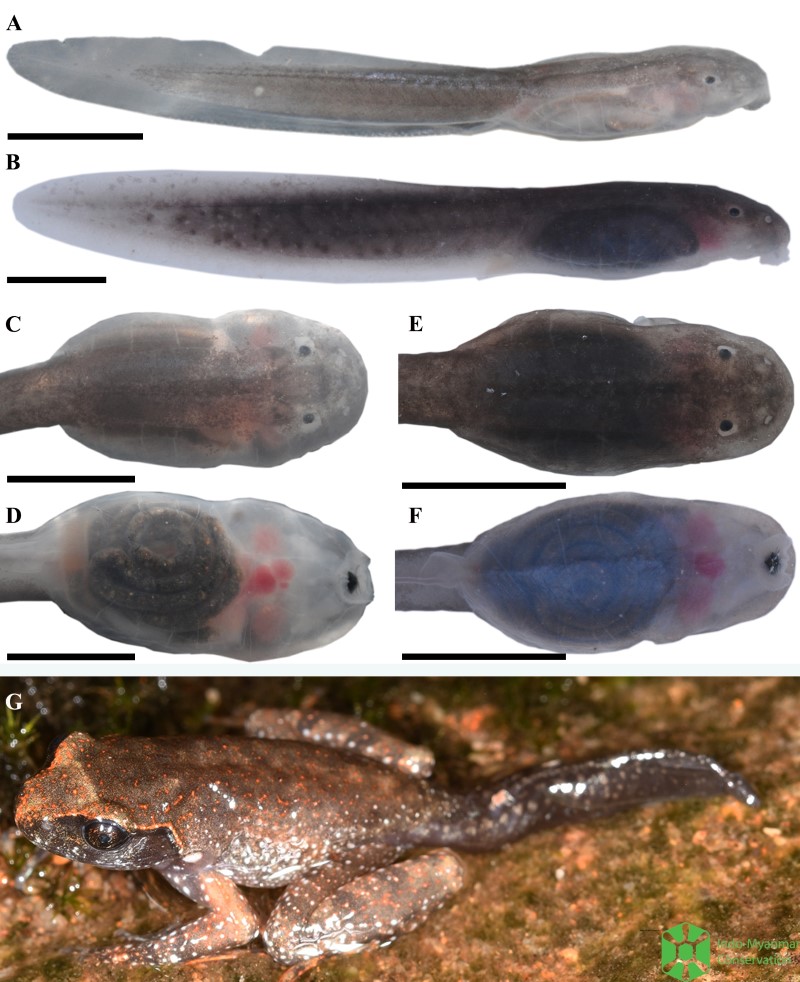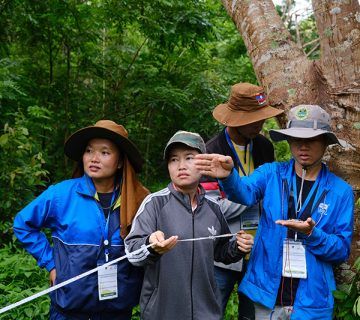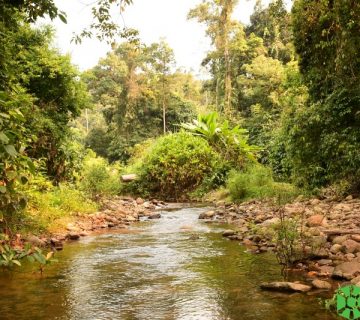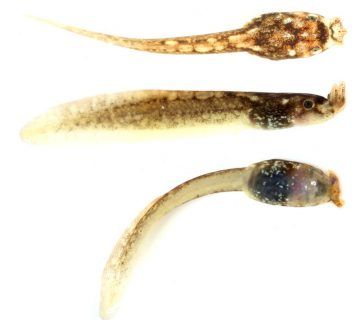The tadpole of a mountain-top endemic and critically endangered frog revealed on the roof of Indochina, plus an enhanced distribution
One month after the papers on the description of larvae stage of six Megophrys frog species were published, our research team was pleased to announce a new publication on the description of tadpoles of the Botsford’s leaf-litter frog (Leptobrachella botsfordi) in Vietnam.
With nearly 300 species of amphibians, Vietnam is known for its richness in biodiversity in Southeast Asia. Notably, 95 of those species are endemic or localized to very small areas with knowledge on such species often also quite limited.
The Botsford’s leaf-litter frog (Leptobrachella botsfordi), first described in 2013, was found in a small stream at around 2800m above sea level on Fansipan – Vietnam’s tallest mountain. It is one of two Critically Endangered frogs of Vietnam and listed in the top 100 Evolutionarily Distinct and Globally Endangered (EDGE) amphibians. Its type locality has been severely degraded due to ongoing degradation and pollution resulting from tourism and associated infrastructure developments, pollution, and gravel mining for path construction. Unfortunately, the ecology, breeding behaviour, and specific habitat requirements of the species are poorly known.

Figure 1. Larvae stage and adult form of Leptobrachella botsfordi in life. Photo by Nguyen Thanh Luan – ATP/IMC
To shed light on this mysterious frog, our team of researchers in the field conducted several surveys in 2017–2019 on Mount Fansipan and neighbouring mountains. As a result, we found two tadpoles of the Botsford leaf-little frog in lower elevations at 2500 m and 2600 m elevation. These tadpoles were found at night in steep, fast-flowing streams, and in cold waters (9–13oC). The tadpoles have elongated, laterally depressed bodies; rounded snouts, tails twice the length of the body, rounded tail tips, and a cup-like oral discs, fringed with short, pointed, conical papillae. In life, tadpoles also have whitish-brown to grey bodies with black irises, reddish internal gills, dark grey to whitish brown tails, and whitish-brown tail tips.
We also noted that tadpoles have only been found in lower elevations than that of adults, where gravel has not been removed. This may indicate that the absence of gravel impacts reproduction; gravel removal may also temporarily suspend large amounts of sediment, resulting in reduced dissolved oxygen levels and siltation downstream, potentially affecting tadpoles over a wider area. Thus, the gravel needed for the construction of trekking paths should not be sourced from streams that are important breeding sites for L. botsfordi and other threatened amphibian species. Given the ongoing degradation at the type locality, the new site needs to be strictly protected and tourism activities should be carefully monitored and managed in the future.
The work is the result of months of surveys and research completed as part of a project funded by Cleveland Metroparks Zoo , Ocean Park Conservation Foundation Hong Kong to survey and protect amphibian fauna in the Hoang Lien range and a Zoological Society of London’s EDGE Fellowship.
More information: Nguyen, L. T., Tapley, B., Cutajar, T., Nguyen, C. T., Portway, C., Harding, L., Luong, V. H. & Rowley, J. J. (2020) A description of the tadpole of the Critically Endangered Botsford’s leaf-litter frog (Leptobrachella botsfordi) with comments on the distribution and conservation status of the species. Zootaxa 4860 (2): 293–300. https://doi.org/10.11646/zootaxa.4860.2.10
12th October 2020
Press release by: Luan Thanh Nguyen, Scientific Officer, Asian Turtle Program of Indo-Myanmar Conservation.
Photo gallery












No comment